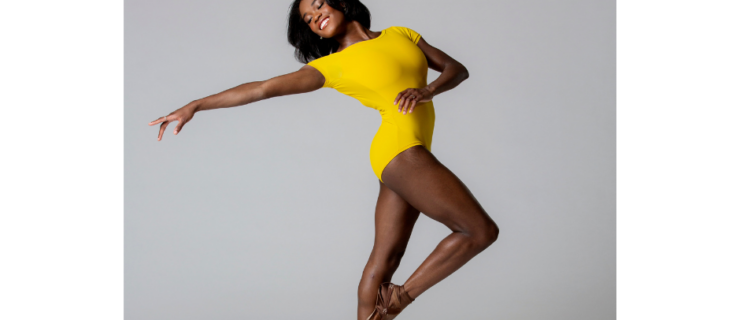I Thought I Missed My Shot to Dance Professionally. I Was Wrong.
In the fall of my senior year of high school, I had a plan for my professional dance career: After graduating, I’d leave my home in Barbados and travel to NYC to audition for the world-renowned Ailey/Fordham BFA program. I’d graduate with honors, work with several amazing companies in NYC, and then make it big on Broadway.
But my plan came to a crashing halt during an ill-fated rehearsal that September. I dislocated my patella, which caused the most blinding, dizzying pain. A few hours later, my knee had swollen to the size of a baseball. I couldn’t put any weight on it, much less dance on it.
My Ailey/Fordham audition was two months away. I was devastated, certain that my dreams were over.
I went to the doctor the following day, and he referred me to a specialist who told me I should reconsider my career options. He was uncertain that I could dance at a professional level, given the nine-month recovery time he estimated and the other “weaknesses” he identified in my anatomy. He said I’d always be prone to this injury, and there was nothing I could do about it.
A part of me believed him. This wasn’t the first time I’d injured my knee. What if a professional dance career wasn’t for me? I was going to miss all the auditions for the Ailey program, anyway. I didn’t know what else to do.
But once the inflammation settled, I started physiotherapy, and there I received a spark of hope. The physiotherapist—a cheerful and positive lady—assured me that the specialist was wrong. With the correct strength training, treatment, and rehabilitation, she said, I would regain full range of movement.
At that point, my dance teacher told me about the Ryerson University’s School of Performance, an esteemed program in Toronto, Canada, which offers training in dance, acting, and technical production. Initially, I was skeptical. I was unfamiliar with the school, and had never considered living in Canada. In any case, I still wasn’t able to dance yet.
I explained this all to Nadia Potts, Ryerson’s dance program director at the time. I told her I had an audition video that I’d recorded for a summer intensive the previous year, and she graciously allowed me to send it in lieu of a live audition.
A few weeks later, I found out I’d been accepted. First I was in complete disbelief—and then I was overjoyed. I was more determined than ever to recover fully. I wanted to prove the specialist wrong. More importantly, I wanted to prove to myself that there was more than one path to a successful dance career.
Six months after my injury, I was dancing again. Hard work and determination got me back in the studio three months earlier than the specialist had predicted. I enrolled at Ryerson in the fall of that year. Four years later, I graduated with honors. Since then, I’ve had the pleasure of traveling the world as a dancer on the high seas, and performing in London’s West End.

Danielle Da Silva, courtesy Nicholls
Being injured helped me learn how to properly take care of my body, and I’m stronger now than I have ever been. My setback also taught me a valuable lesson: Sometimes, our dreams are more limited than our potential. As a young girl growing up in Barbados, if someone had said to me I’d one day perform in the West End production The Lion King, I’d probably have laughed at them.
What I’ve achieved is even more wonderful because of the journey I’ve had. I didn’t plan for my career to happen this way, but I wouldn’t change a thing.




